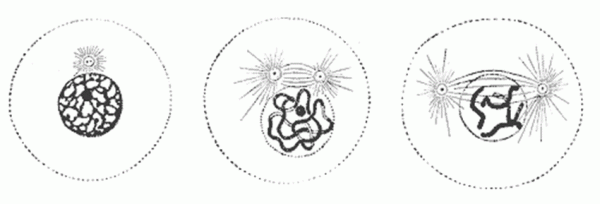
What stage of mitosis is depicted by the image above?- prophase
- metaphase
- anaphase
- telophase
- cytokinesis
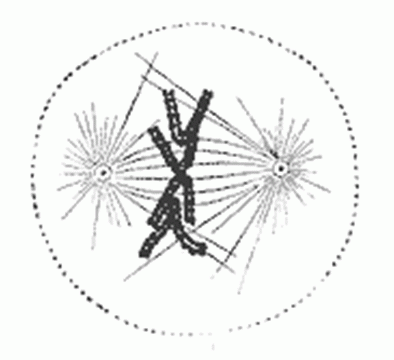
What stage of mitosis is depicted by the image above?- prophase
- metaphase
- anaphase
- telophase
- cytokinesis
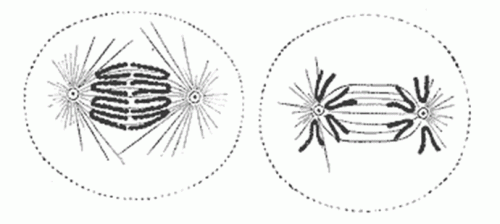
What stage of mitosis is depicted by the image above?- prophase
- metaphase
- anaphase
- telophase
- cytokinesis
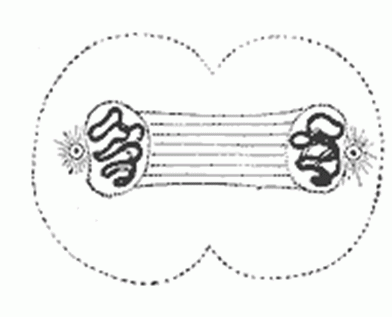
What stage of mitosis is depicted by the image above?- prophase
- metaphase
- anaphase
- telophase
- cytokinesis
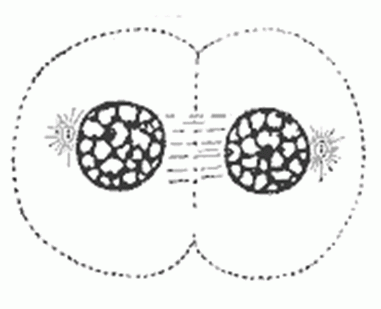
What stage of mitosis is depicted by the image above?- prophase
- metaphase
- anaphase
- telophase
- cytokinesis
- The correct order for the stages of mitosis is
- prophase, metaphase, anaphase, telophase
- anaphase, prophase, telophase, metaphase
- prophase, anaphase, metaphase, telophase
- telophase, anaphase, metaphase, prophase
- metaphase, anaphase, telophase, prophase
- A human cell ordinarily will have 23 pairs of chromosomes, for a total of 46 chromosomes. At the end of a cell cycle, including mitosis, the new cells will have
- 23 pairs of chromosomes; 46 total
- only the 23 maternal chromosomes
- only the 23 paternal chromosomes
- 92 chromosomes, as a result of doubling during the S-phase of the cell cycle
- Interphase is broken into phases known as
- G1, S and G2
- S, Mitosis, and Cytokinesis
- G0, G1, and G2
- prophase, metaphase, anaphase and telophase
- Cells that will no longer undergo division enter a phase known as
- apoptosis
- meiosis
- mitosis
- interphase
- G0
- In stage G1, the cell
- copies the chromosomes
- doubles the cell contents, excluding the chromosomes
- reduces the number of chromosomes from the diploid number to the haploid number
- creates two identical nuclei

The phase of mitosis depicted in the circled region above is- prophase
- metaphase
- anaphase
- telophase

The phase of mitosis depicted in the circled region above is- prophase
- metaphase
- anaphase
- telophase

The phase of mitosis depicted in the circled region above is- prophase
- metaphase
- anaphase
- telophase

The phase of the cell cycle that appears to have just been completed in the circled region is- prophase
- metaphase
- anaphase
- telophase
- cytokinesis
- After a bacterial cell has undergone binary fission, how many chromosome copies will each daughter cell contain?
- one
- two (one maternal and one paternal)
- forty-six
- one pair
- Which of these do mitosis and binary fission have in common?